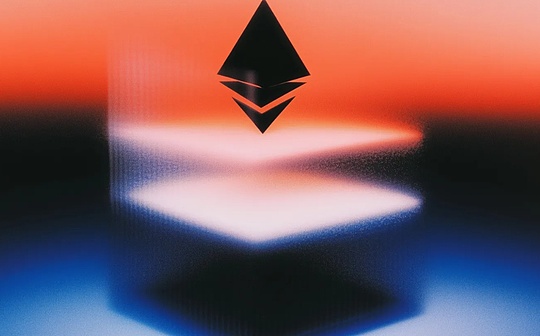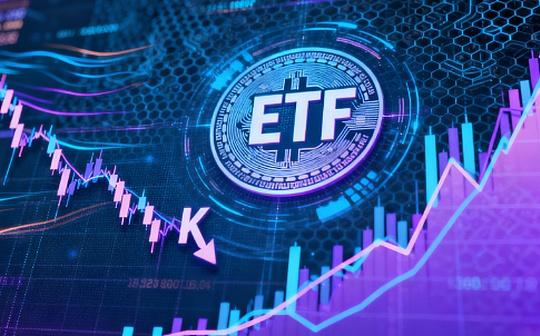
Author: mteam.eth Source: Bankless Translation: Shan Oppa, Bitchain Vision
To become a successful blockchain, a forward cycle flywheel must be established, with the following structure:
-
Economic progress(such as TVL, price, revenue, transaction volume, etc.) brings attention and visibility to the chain, so as to: ↓
-
New applications can be financed, new developers are willing to learn this technology, and new users can also benefit from everything we create to improve their lives, which will ultimately lead to: ↓
-
Innovation—— Improve infrastructure and applications, improve efficiency, and explore new use cases and architectures.The innovation stage is the most needed collaboration in the entire cycle, but it is also the stage where natural motivation is most likely to make the team work independently.Innovation drives economic progress, and the cycle begins again.
And the problem of Ethereum is very simple – we broke every link of this flywheel.

Note: This article focuses on Ethereum’s high-level technology roadmap and does not involve the evolution of its social layer.But these two must exist together to present a complete picture.
First, acknowledge the problem
New applications, developers and users are all in Layer-2!Innovation takes place in Layer-2!Even economic progress is tilting towards Layer-2.
If these L2s feed back the entire flywheel cycle, this is not a problem—but the reality is that they often do not do it.

So, where is the root cause of this flywheel break?
Starting in 2020, Ethereum regards Rollup as the only scalable path and seriously overestimates the contribution potential of L2 to the Ethereum flywheel.
Rollup is positioned as a scaling solution.Compared to sharding, it looks simpler, does not weaken the security of the Ethereum main chain, and can even bring greater composability.
But Rollup is not just an expansion architecture, it is also aIncentive architecture.Its basic logical path can be simplified to:
-
We need to expand Ethereum.
-
To expand a blockchain with the characteristics we need, some form of sharding is necessary.
-
In protocol layer execution, sharding is too complex and comes with other problems.
-
Therefore, Rollup is the only way to expand.
In my opinion, point 2 in this set of logic is a major misjudgment.In practice, we obviously made mistakes (at least to some extent).For example, Solana and Monad show a roadmap that can achieve scalability without relying on any form of sharding.At the same time, many core Ethereum developers have also proved that we can also significantly improve the performance potential of L1.
Although I don’t think a single chain can carry all the needs, we obviously rushed to the end before exploring the opportunity for L1 expansion.
The reasoning in point 4 is also untenable.We have failed to correctly evaluate the potential negative impact of the “Rollup-centered Roadmap” on the Ethereum Mainchain Network Effect Flywheel.
The ideal flywheel
I think we can rebuild Ethereum’s network effect flywheel:

Rather than letting the network effect be pulled out of the flywheel,It is better to allow Layer-2 to accelerate the transmission of network effects between each other through synergy.
Specifically, this means:
-
Provides almost unlimited elastic expansion capabilities as the overflow layer of the main chain;
-
Promote customized, specialized and bold experimental exploration;
-
Attract users and developers to join;
-
Drive revenue growth of the entire Ethereum ecosystem, while increasing the revenue of Ethereum L1 itself;
-
Maintain a high degree of composability with Ethereum.
This interaction mechanism is not only beneficial to Ethereum, but also to Layer-2 – the water rises and the ship rises.
vcccccccccccccccc4

A solid foundation
To effectively restart this flywheel, we need a powerful one-layer network (L1)—
A main chain worthy of being combined;
an ETH worth holding as a vault asset;
A platform that can serve as a center for innovation coordination.
How to do it?The answer can’t be simple:Significantly expanded L1.
We should start with innovation at the L1 level.
This is for three major reasons:
-
L1 expansion can enhance network effect under ideal flywheel;
-
The expansion of L1 will increase the competition threshold for L2;
-
L1 expansion also helps L2 directly!(Especially the type L2 that I will discuss in the next section)
Most readers may be aware of what L1 expansion means in practice:Increase TPS and gas per second limit while reducing block time.
We want to build Ethereum L1 intoThe strongest settlement network, tooThe strongest execution network.
And all of this is exactly the solid foundation Layer-2 really needs.
Let Rollup return to home
As L1 expands and builds its own network effect, we must seize the time to optimize Layer-2 so that it can contribute to the ideal flywheel.
We need to strike a balance between the following two points:
-
Ethereum has promised Rollup that they will be the path to Ethereum expansion-first support;
-
Rollup does build its own network effect.
If we now turn to L1 expansion, we must act with caution to avoid completely alienating the main L2 projects (of course, some L2s do not have the need to exist, and they should die if they should).
I propose a simple Rollup design:
-
Rollup uses Ethereum as the data availability (DA) layer;
-
Rollup uses Ethereum to execute – i.e. it isNative Rollup;
-
Rollup uses Ethereum to sort – i.e. it isRollup based on Ethereum;
-
Rollup uses ETH as the native gas token.
This design of Rollup is called“Ultrasound Rollup”, or “based on + native Rollup. I’ve discussed this type of design in detail before.
However, on Ethereum today,Ultrasonic Rollup is still not feasible.
To implement the “native” part, Ethereum needs to add a new name calledexecution engine opcodeopcode.
There are also some problems in actual execution based on sorting.And all these changes areL1 expansionClosely related.
From multiple choice to the only answer
Ethereum is building top-level data availability (DA) services, based Rollup is outputting sorting capabilities, and we are also continuously improving.
Native Rollup will bring excellent execution performance.
The Ethereum main chain integrates the core Rollup services into a unifiedUltrasonic Rollup Architecturemiddle.
Although the chain can still remain modular (the market is licenseless after all),
But the services provided by Ethereum are so critical and perfect.So much so that other competitors become irrelevant.
In this mode, the logic of value capture (via fees) is very straightforward:
Provide the most valuable services, connect to the largest synchronous economic zone, with the strongest economic security, the most censorship-resistant sorting capabilities, the most reliable settlement layer, and the safest data availability layer.
Narrative natural formation:“Ethereum is the best” →Ethereum is the best.
Expand the main chain,Let Rollup return to home court,Comprehensive integration of everything.And get it all done as soon as possible.








